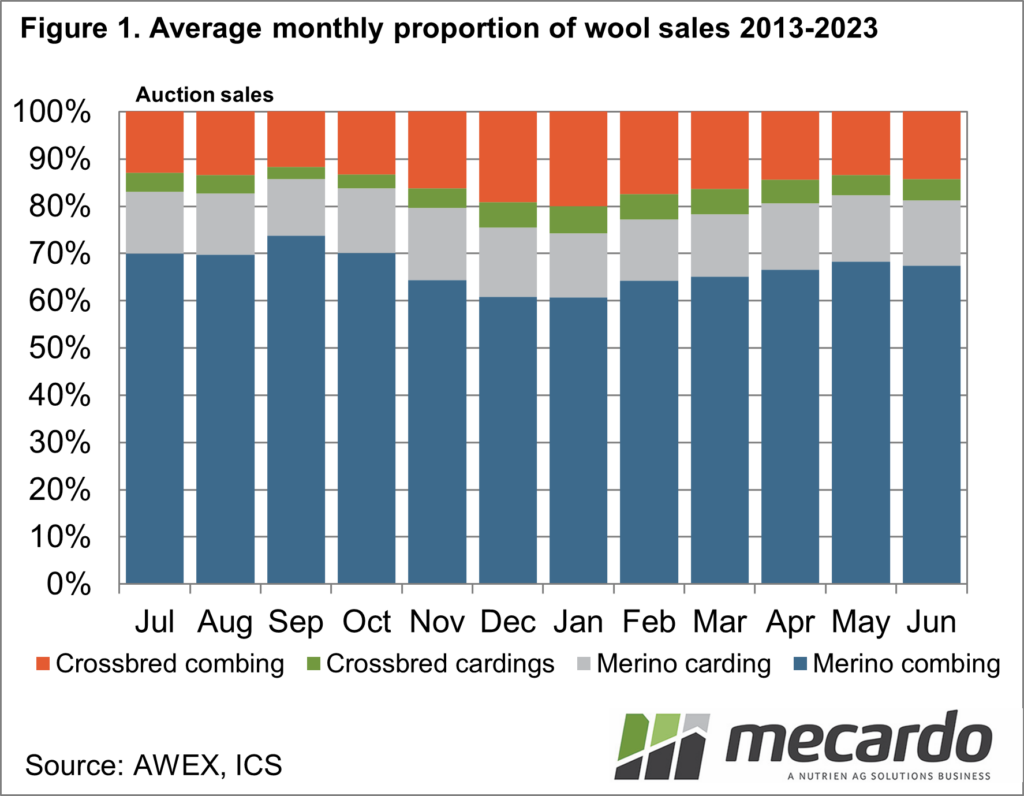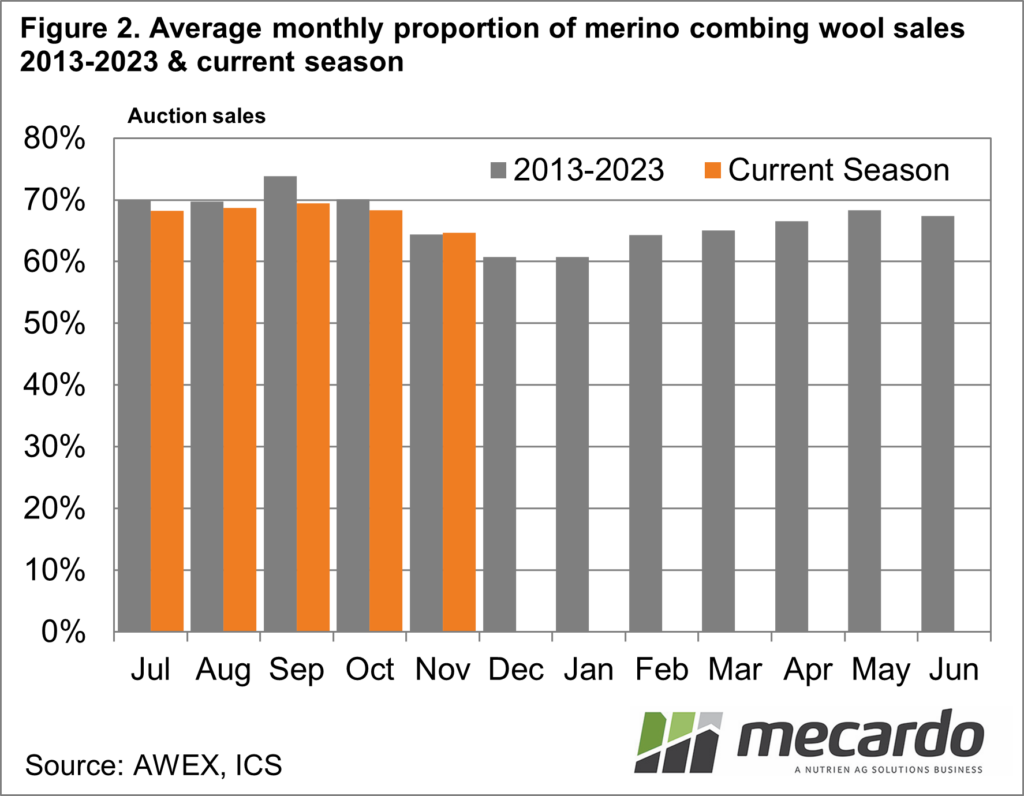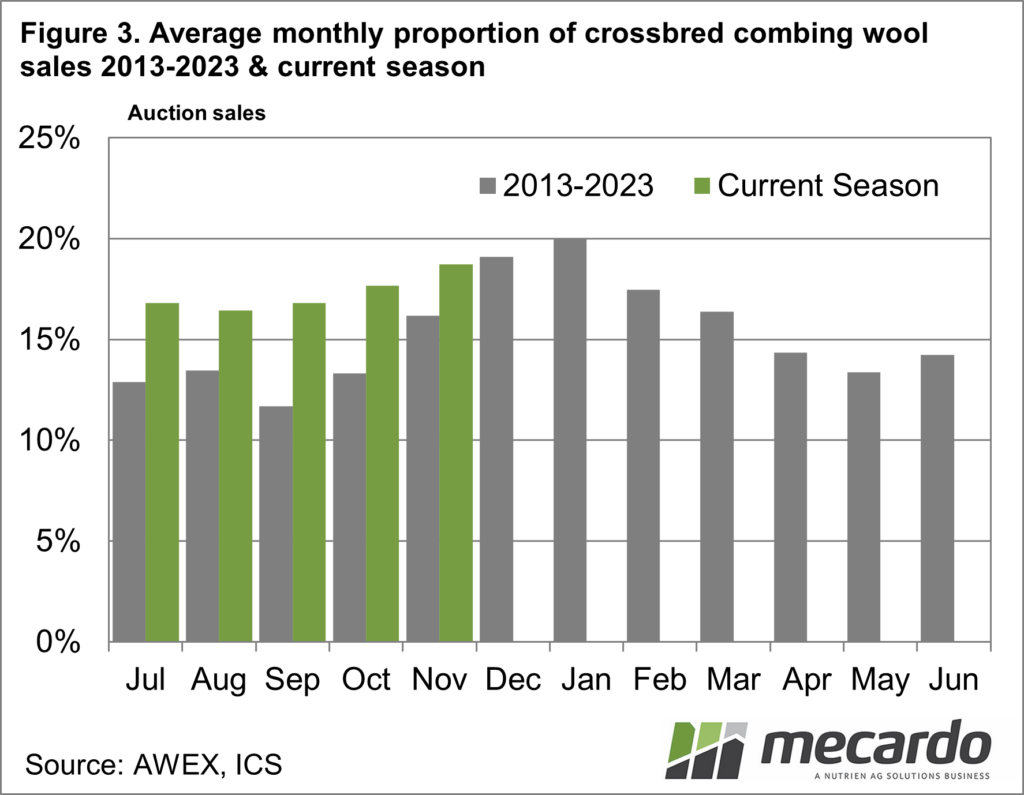The makeup or quality of the Australian wool clip varies through the season, and between seasons. The supply chain at times can turn up at auction generally assuming volumes and quality will be on par with that of recent years. That leaves the demand side of the market open to supply shocks. In this article we look at seasonal patterns in merino and crossbred, combing, and carding volumes.
The Schneider Group weekly wool report (https://www.gschneider.com/australian-wool-market-reports/)
from last week noted the lower supply of merino wool despite solid weekly
rostered volumes of wool. This raises the point that weekly total volumes do
not necessarily tell us what is going on with the supply of specific categories of
wool such as combing length merino wool.
Figure 1 shows the proportion of auction
sales by month during the past decade which was made up of merino combing and
carding, wool and crossbred combing and carding wool. Crossbred combing wool
tends to reach a maximum of 19-20% in December/January sales, with merino
combing wool conversely reaching a low proportion in these months.
Now to the situation in the current season.
Combing and carding wools have been separated because the demand for carding
wool is appreciably weaker than for combing wool at present. Figure 2 shows the
decade-average proportion of merino wool sold at auction by month, along with
the July to August (and November to date) proportions this season. This season
the monthly proportion of merino combing wool sold at auction has been coming
in 1-2% below normal levels (it has been below normal levels since March). For
November to date, the merino combing proportion has reverted back to normal
levels.
Figure 3 shows a similar analysis for
crossbred combing wool. There has been a clear increased proportion of
crossbred combing wool in Australian wool sales this season, and through the
previous season as well. There has been no shortage of crossbred combing wool,
if anything there has been an oversupply.
AWEX produces a regular four-week auction
volume forecast (https://www.awex.com.au/auction/four-week-forecast/) which, in addition to weekly rostered volumes for
sale, offers a detailed breakup of the coming week’s sales by wool
quality/category. This shows exporters will be watching the supply of wool
types they are interested in very closely rather than the weekly total farm
bales being offered. However, market commentary often refers to weekly total
volumes and one suspects the further the reader is from the market the more
likely that it is the key number followed.
What does it mean?
If you “sell and be damned” at wool
auctions, then this article is of little use. If you want to improve your
understanding of what is going on at wool auctions then understanding supply
(which as Australia supplies around three-quarters of merino wool we have a
good grasp) is critical. Understanding supply requires looking beyond the
single market totals/indicators, into the details which concern the sort of
wool you will be selling.
Have any questions or comments?
Key Points
- The makeup of Australian wool auctions in terms of quality (be it breed, fibre diameter, and so on) varies through the season and between seasons.
- Single indicators, be it the Eastern Market Indicator, the average clip fibre diameter or the weekly total farm bales do not always tell you much about the supply of the wool you will be selling.
- Supply, especially change in supply, plays a large role in determining wool prices.
- This season and last, there has been a clear increase in the proportion of crossbred combing wool at wool sales.
Click on figure to expand
Click on figure to expand
Click on figure to expand
Data sources: AWEX, ICS, G Schneider, Mecardo















